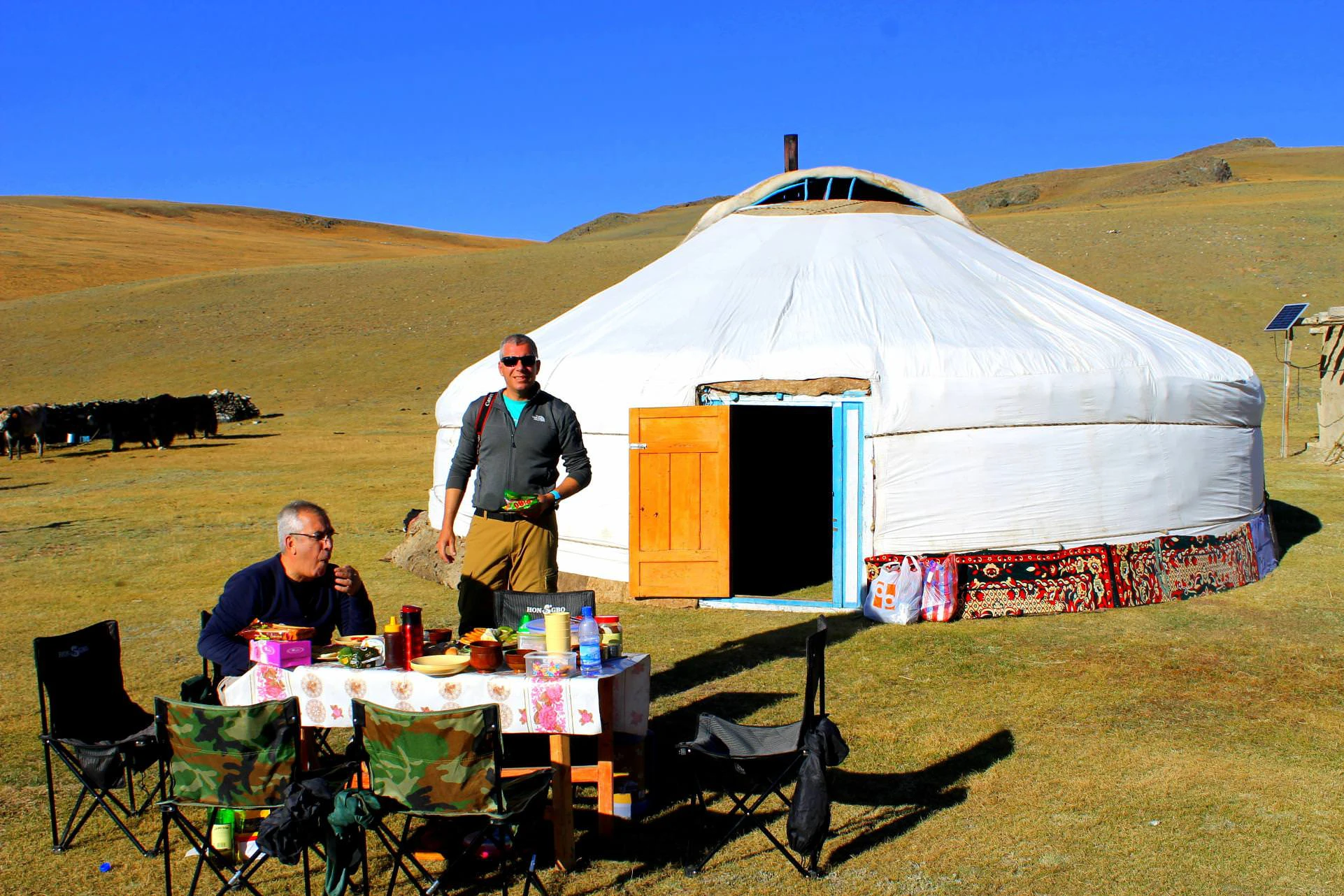A round, portable, wood-framed felt tent, covered in durable white canvas, provides the basic description of the traditional Mongolian home, known to many familiar with Russian as a yurt. The modern shape of a Mongolian ger has evolved from huts, marquees and wheeled abodes.
During ancient times, people in what is now Mongolia made shelters from dry branches and animal skins, which may well have been the forerunner of the contemporary ger. The first groups to very closely resemble their modern-day equivalents date back to 2500-3000 BC. In Mongolia’s medieval times, large gers belonging to kings and nomadic chieftains could be found on carts dragged by oxen (typically, 22 beasts were hitched to these wagons).
A ger has two principal elements: the wooden frame and the felt cover. In Mongolian, its essential components are called the khana (the wooden shell), the uni (the poles that support the ceiling, measuring 1.5-3 meters), the bagana (the two central support columns, and the toono (the hole in the roof through which smoke escapes from the ubiquitous woodstove). A ger has between 4-12 khanas and 45 to 120 uni depending on its size, but only one toono, and only two baganas
Several felt layers cover the wooden frame and external white canvas; they are designed to make the ger aesthetically appealing, while protecting it from rain and snow.
Mongolia nomads, who move several times each year, pack their gers onto the backs of camels or camel and ox carts. The weight of a ger is approximately 250 kg. For an expert, it only takes half an hour to collapse an average ger and a bit longer to rebuild it.
Nomads, experienced urban Mongolians, or an intrepid traveler, assemble a ger in the following order.
- Lay the circular, collapsible wooden floor.
- Erect the khanas and the door in a circle and tie them together with a long rope.
- Erect the Baganas, the two wooden columns, in the center of the floor, tie them to the toono.
- Connect the toono and the upper edges of the khanas with the unis: the long, thin poles.
- Now that the frame stands upright, drape the canvas, then the white felt covers it.
- Fasten these covers securely to the frame using ties
- Wrap a long, thin felt belt (30 cm wide) around the outer edge of the cover to prevent strong wind from blowing into the ger.
- Partially cover the toono, the smoke hole, with a rectangle of felt. Use this felt to fully cover the hole at night or when weather conditions turn harsh.

A Mongolian ger’s door traditionally faces south, ostensibly providing more light and protecting inhabitants from northern winds. This practice is so strongly ingrained that no matter which direction the wind comes from, the ger’s always opens in the same direction.
Tradition also dictates the arrangement of furniture in the ger. The stove, called the golomt, invariably stands in the center of the ger, serving as its most important object. A ger is divided into a western, male half, and an eastern, female half. Mongolians place objects traditionally associated with men on the west side of the ger, including the host family’s bed, and any horse saddles, bridles or other harnesses. Women’s and children’s possessions are found in the east of the ger, along with any cooking utensils belonging to the family. Custom dictates that when a man enters a ger he steps to the western side and a woman to the eastern side. The hoimor, a kind of shrine, sits directly opposite the door and houses and displays valuable items and monuments, including family photos and usually an image of the Dalai Lama and or Chinggis Khan.
Renowned for its red and yellow backgrounds decorated with brightly colored patterns, ger-style furniture includes beds, wardrobes, and cupboards, while even cooking utensils bear these vivid, multi-colored designs.
While modern, western-style houses have become regular fixtures in Ulaanbaatar and Mongolia’s other cities, rural Mongolians have retained their traditional lifestyle, of which gers remain an integral part. Visitors can take the opportunity to experience a unique dwelling and the lifestyle it fosters at one of the countryside’s many ger camps or visiting the home of a nomadic Mongolian family.



